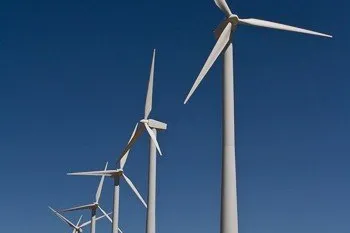US wind PPA market 'resilient and stable' in Q1 despite Trump policy turmoil: LevelTen
Amid strong demand, sellers and buyers can better address contractual risks posed by tariff and tax code changes

US onshore wind power prices declined 3.7% in the first quarter versus the prior period amid “immense uncertainty” from President Donald Trump’s federal tariff and tax policies, according to LevelTen Energy, the largest PPA marketplace operator.
P25 PPA offer prices – the most competitive 25th percentile of total PPAs – have been rising in the past several years due to high interest rates, inflation, and supply chain challenges. In the year ending 31 March, they increased 16.6%.
The decline in wind prices made it more competitive with solar across the country - $47.93/MWh versus $48.81/MWh.
Trump on 9 April abruptly announced a 90-day pause on most of his "reciprocal" tariffs with rates of 11% to 50% that took effect earlier that day, with goods from nearly 100 countries now subject to a 10% baseline global levy.
China was the most notable exception; its products now face a 145% tariff, a four-fold increase from 34% imposed by Trump soon after taking office 20 January.
The administration asserts that 75 nations with Japan, South Korea, and Vietnam in the forefront have come forward wanting to cut trade deals to avoid his tariffs, which Trump cited as a reason to pause them. Still, there is no guarantee he will accept the concessions they propose.
In February and March, Trump unleashed a barrage of 25% tariffs on aluminum and steel, two key wind industry inputs; automobiles; goods from all countries that import Venezuelan oil, and most goods from Canada and Mexico excluded from a 2020 North America free trade agreement.
LevelTen said the second quarter price index “may be more incorporative of the impacts of these executive actions but for now, the US PPA market is exhibiting resilience and stability.”
It noted that the fate of the Inflation Reduction Act (IRA), the 2022 climate law, and its expansive suite of clean energy tax credits, which benefit both the wind power buy and sell sides, is also uncertain.
Trump appears to favour rescinding wind and solar tax credits for energy production but perhaps retaining those for supply chain manufacturing for several years.
Some are, including San Antonio-based CPS Energy, the nation’s largest municipal electric utility, which last week announced expansion of a PPA in Texas with Avangrid by 159.2MW to 320MW.
Avangrid, owned by Spain’s Iberdrola, said the additional energy capacity will enable CPS to power 40,000 more homes “just in time for the hot summer months.”
LevelTen noted the North American PPA market – it also tracks the Alberta power market in Canada – continues resilient and robust.
Demand for wind volumes is high, with the technology’s higher capacity factors (than solar) and attractive production profiles (strong at night in Texas, for example) are “particularly compelling for technology players seeking to power growing data centre needs,” it said.
First quarter request-for-proposal (RFP) volume on its platform hit 13 million/MWh, indicating continued deal momentum.
“The complexities brought by the pandemic era provided a period in which new contractual terms emerged that protect counterparties and allow for flexibility, and the sector continues to incorporate nuanced, risk-mitigating provisions,” it said.
Such terms include price adjusters to address tariff concerns, change-of-law clauses, and more recently, a growth in the inclusion of trade event provisions meant to address executive actions and other hard-to-predict events with force majeure clauses.
Trump is a longstanding critic of wind power, asserting it is uneconomic and unreliable, while falsely claiming “ugly” turbines cause cancer.
He has ordered federal agencies to suspend approvals and permitting for onshore wind projects on federal lands, a thin sliver of capacity under development across the US.
(Copyright)